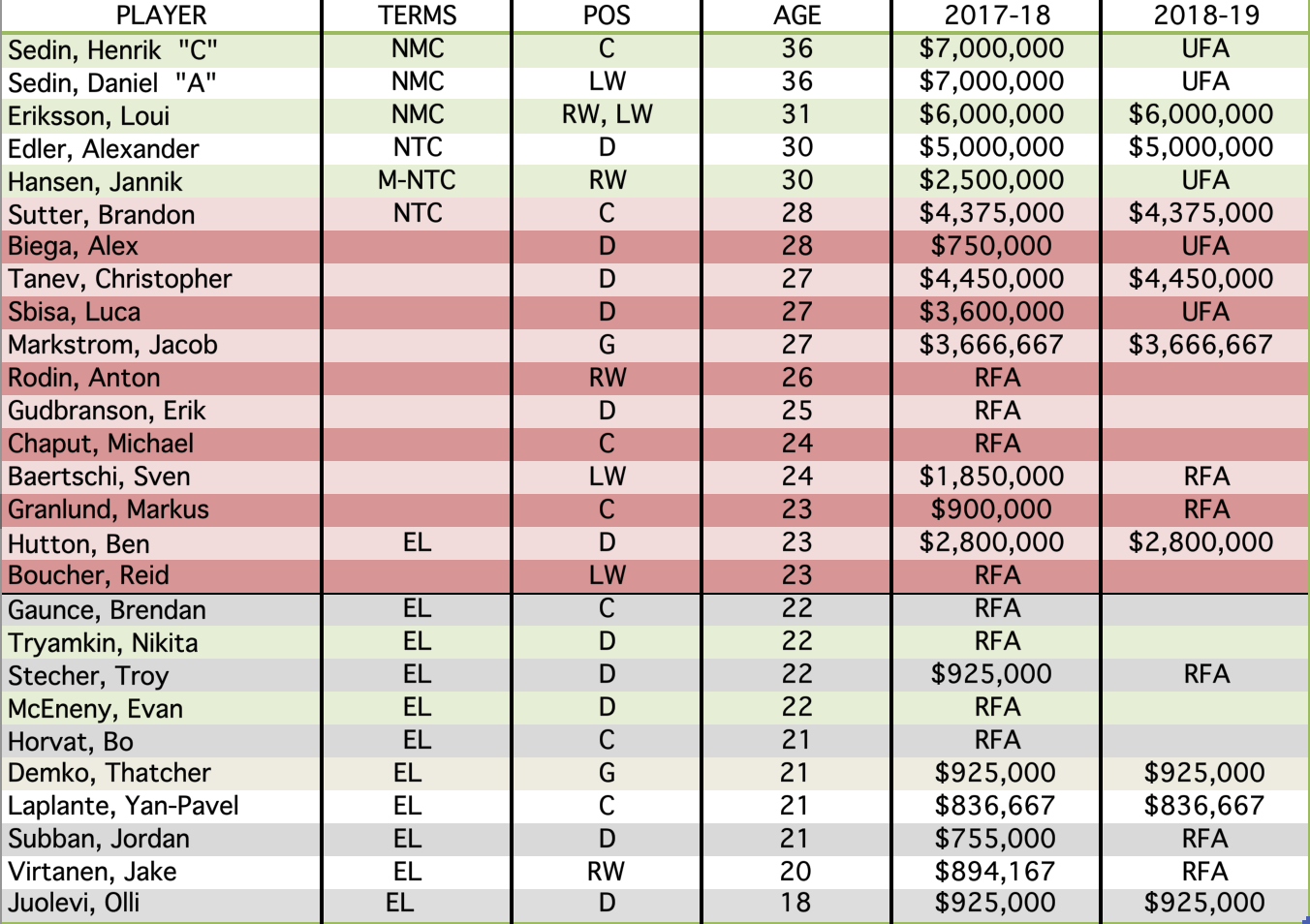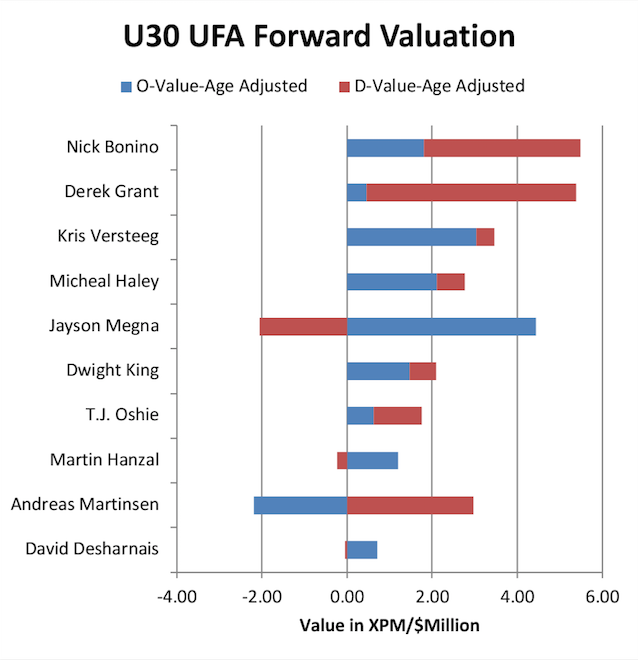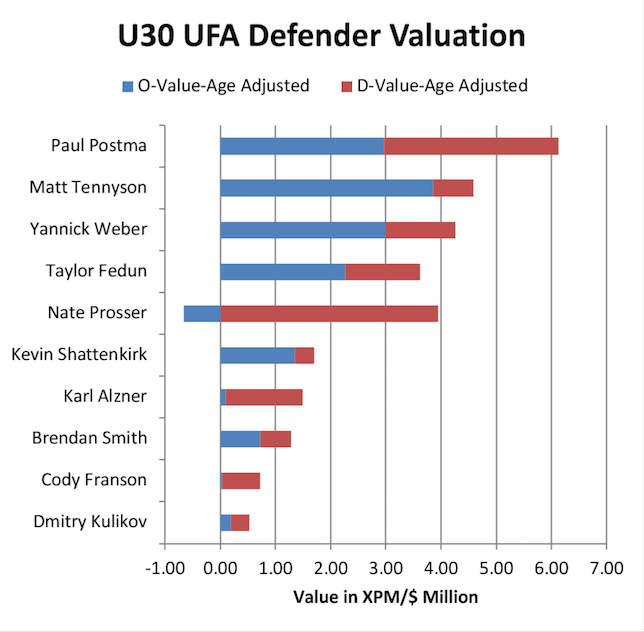The Vancouver Canucks have been selling themselves as contenders for a long time. As we approach the 2016-17 NHL trade deadline, it appears it is finally time for the Canucks to sell their roster pieces as rentals to the real contenders.
As recently as two seasons ago the Canucks were a 101-point team, finishing fifth in the Western Conference and considered a decent threat to make some noise in the playoffs. Their 48-29-5 record that season was similar to the 48-28-6 posted by the eventual Stanley Cup Champion Chicago Blackhawks. Unfortunately, Vancouver was upset by the Calgary Flames in the opening round and they’ve been in an accelerating downward spiral ever since.
Both of the Sedin twins were still 70-plus point players and they had adequate depth beyond that with the likes of Radim Vrbata scoring 30 goals, and four other forwards topping the 30-point plateau. They also featured a balanced defence corps with four blue liners posting 20-plus points. The offensive distribution had them finish the year ranked sixth in NHL scoring, averaging 2.95 goals for per game.
That spread in production and elite top-end talent obscured the problem on the horizon, though, as the team’s age has shown ever since. The Canucks’ top line had three skaters who were all over 33. Eight out of their top 10 scorers were 28 or older, and 26-year-olds Nick Bonino and Shawn Matthias weren’t destined to stick around. Bo Horvat and Linden Vey were the only regular skaters with 60-plus games played for the Canucks that year under the age of 25.
Fast forward to 2016-17 and the Sedins are now pushing 37, Alexandre Burrows is 35, Loui Eriksson was signed long-term prior to his 31-year-old season, and the core of the team is in decline.
Vancouver’s front office seems to have made significant errors in dealing the aforementioned Bonino and young defender Adam Clendening in a package to Pittsburgh to acquire Brandon Sutter, and dealing a first-round draft pick in Jared McCann to snap up physical blue liner Erik Gudbranson from Florida.
Both transactions were designed to address a perception of defensive softness — but the exchange of top-end skill for grit rarely works out in the long term. It now appears the Canucks lack depth throughout their lineup and there is a valid concern about who will pick up the slack as the Sedins and the surrounding core fade with age.
The core of the most competitive NHL clubs typically have an age range right in the sweet spot — usually between 24 and 30. Players tend to peak in terms of offensive production sometime between the ages of 24 and 26, then decline marginally until their age-30 season. Any cursory examination of Vancouver’s players in the 24-30 age range for next season should make it clear there is significant cause for concern.

*data courtesy CapFriendly.com*
The only top-end talent amongst that core age group of skaters is Chris Tanev and his value is almost entirely defensive. It seems inconceivable that any NHL management group would consider this roster competitive. The highlighted core exhibits very little in the way of top-nine offensive depth and beyond Tanev and Ben Hutton most of their blue liners would struggle to be in the top-four anywhere else in the NHL.
At the younger end of things Horvat is developing nicely at the age of 21, while Troy Stecher and Nikita Tryamkin have shown themselves to be at least capable of playing in the NHL as 22 year olds. Brock Boeser is an elite 20-year-old scoring winger developing at the University of North Dakota who hopefully joins the Canucks sooner rather than later. Olli Juolevi was selected fifth overall in last year’s draft and the six-foot-three, strong skating, Finnish blue liner is honing his craft in the OHL with the London Knights. Again, he hopefully makes the leap to the NHL sooner rather than later. Additionally, the hope in Vancouver is that the likes of Jordan Subban and Thatcher Demko make the jump from Utica.
The Canucks appear destined to wander in the wilderness for a few more years if they can’t make significant skill upgrades via free agency — a prospect that appears unlikely given the talent available this off-season. Following Friday’s announcement that Patrik Berglund had re-signed with the Blues, the landscape has shifted slightly when we examine the top bargain value UFAs who are under the age of 30.


*data courtesy CapFriendly.com and @DTMAboutHeart*
The valuation indicated is based on 2016-17 cap hit, Total Expected Plus-Minus Impact, and an age factor to account for potential physical decline effects. In this case the further beyond 26 a player’s age is, the more likely they are to show a significant decline year over year. Thus we can adjust their valuation downwards to reflect that potential.
While there are a few potential bargains to keep tabs on as the summer approaches, Vancouver’s main objective needs to be to shift towards rebuilding through the draft by acquiring as many picks as possible. They currently are without their 2017 fifth and sixth round draft picks, and thus only have five selections in the upcoming draft. In the seemingly random boom vs. bust lottery that is the second through seventh rounds of the NHL Draft, simple probability should make it obvious that it is hard to win when you only have four tickets out of the 186 available.
Despite the Canucks’ limited trade options, they should be willing to consider parting with any roster player who is 25 or older as none of those players are likely to still be around as a core component when the team returns to competitiveness. Dealing Burrows and Hansen is beyond obvious at this point, and it seems exceedingly unlikely any other club would take on the contracts of Edler, Sutter or Eriksson.
That leads us to conversations centred around dealing the likes of Tanev, Sbisa and Gudbranson. Tanev would fetch the most on the open market, particularly as he is on an affordable contract ($4.45 million) for three years past this season. Sbisa and Gudbranson are both perceived as “shut down” type defenders and there is likely a home to be found for both.
However they proceed, the Canucks should be worrying far less about convincing themselves or their fan base that they will be competing for a Stanley Cup next season and instead focus on how competitive they are in two-to-three years when their future core is on the rise.
The longer they sift through patchwork attempts to fill in gaps on the current roster, the more unlikely they are to return to competitiveness.
[relatedlinks]









